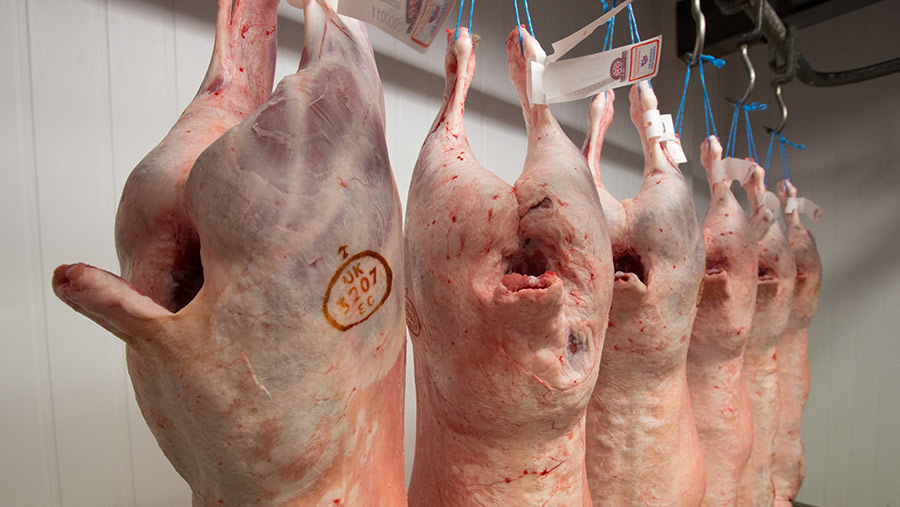Concerns raised about hike in frozen NZ lamb imports
 © Tim Scrivener
© Tim Scrivener Red meat market specialists have voiced concerns about increasing levels of New Zealand lamb imports.
This comes as lamb prices took a hit in markets in the week ended Tuesday 3 January, which saw 34,286 head of SQQ lambs average 242.54p/kg.
This was a fall of more than 10p/kg, despite a 44% drop in numbers.
Although the latest AHDB data for all New Zealand lamb showed October imports of 900t were 1,400t lower than September’s total, the drop-off follows a seasonal pattern.
The same pattern has been repeated over the past few years, with imports in 2021 and 2022 averaging 902t.
See also: Slow grain trade sees values creep down further
However, figures for the rest of the year are up and, since October, industry observers point to an increase in New Zealand imports during November and December that has been sharper than usual.
The upshot is total imports of all New Zealand lamb categories are up 35% on the year in value terms and 10% in volume, according to HMRC data.
Supporting British agriculture
Auctioneer Jack Walton of Hexham and Northern Marts aired his frustration at the level of New Zealand lamb in supermarkets via Twitter.
“As a sheep auctioneer and after not the easiest day’s trading, there is nothing more demoralising than walking into a supermarket to find it stuffed with New Zealand lamb,” he said.
“Why on earth can’t they support British sheep farmers and British agriculture as a whole?”
Frozen lamb
NFU chief livestock adviser John Royle also used Twitter to voice concern about the UK lamb trade and focused on a marked increase in New Zealand frozen lamb imports.
Mr Royle said frozen products could offer a lower-quality alternative to British lamb for cash-strapped shoppers struggling with the cost-of-living crisis.
Country of origin becomes slightly less important for consumers when buying frozen, potentially threatening British lamb’s market share, he said.
“Also, while some retailers are clear on their sourcing commitments for fresh, they are less so when it comes to frozen product,” he added.
AHDB retail insight manager Grace Randall highlighted the extent of the switch to frozen imports.
Historically, yearly averages have ranged from 56% to 63% frozen product from New Zealand. However, trends since mid-2022 have shifted towards more than 90% of these imports being frozen.
By October, 95.7% of New Zealand lamb imports were frozen, Ms Randall said.
The main driver appears to be risk management, with retailers concerned about supply chain disruption caused by delays at ports, she suggested.
Frozen products have a longer selling period and so offer greater flexibility to buyers.
However, Ms Randall said there had not yet been an increase in sales of frozen product to the public.
“While it is much cheaper to buy frozen [£7.54/kg] rather than fresh [£10.81/kg], this doesn’t currently seem to be swaying shoppers towards frozen lamb,” she said.
